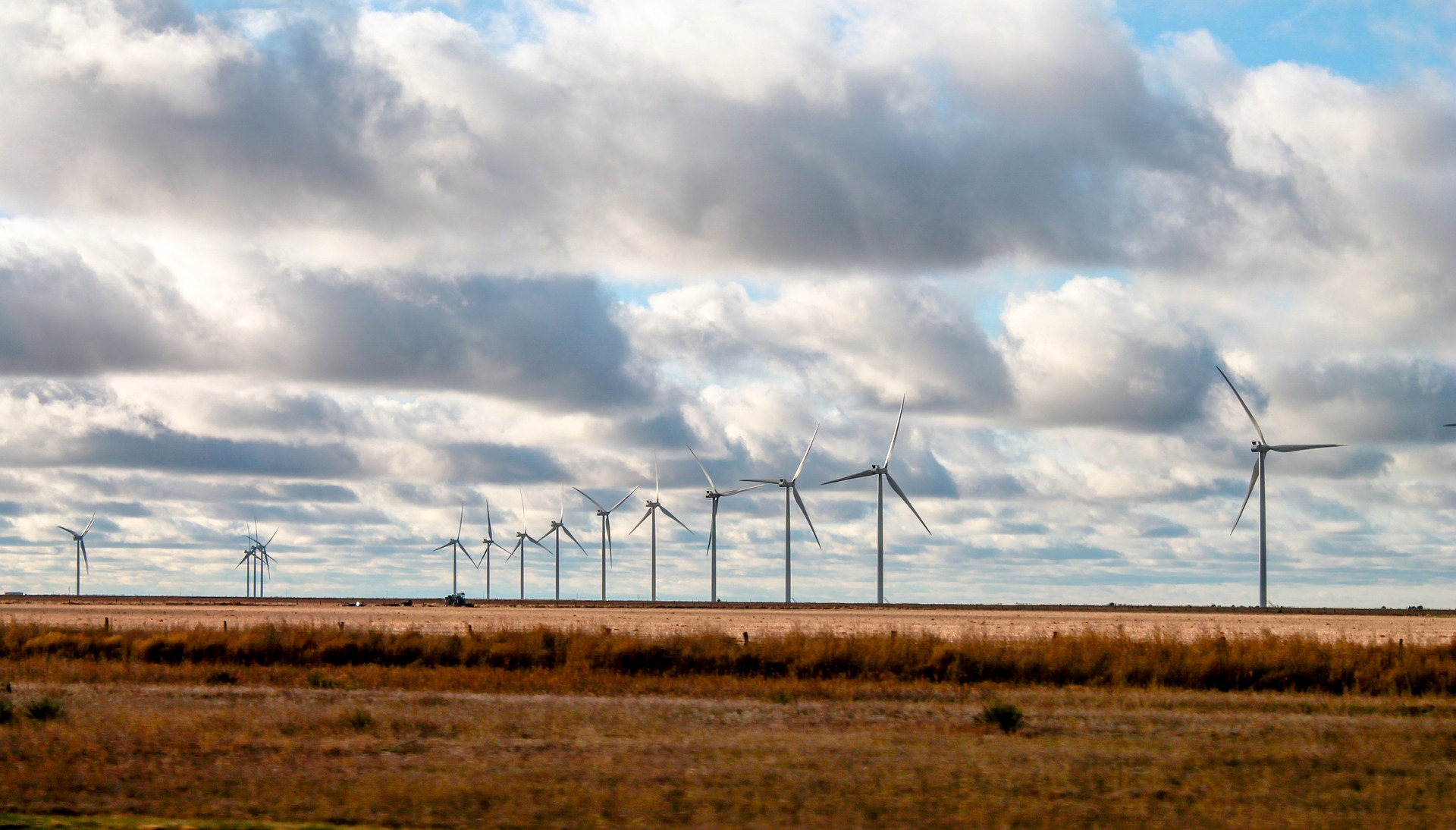The effect of lots of wind turbines on weather and climate is a small but active research area. Wind power converts wind energy into electricity, thereby removing that energy from the air.
The research issue of how taking a lot of energy out might affect weather or climate seems to have emerged as early as 2004. Studies range from the global climate impact down to the local effects of a single large wind facility.
Here is a nontechnical article on a key global climate scale paper in 2011: “Wind and wave farms could affect Earth’s energy balance“in New Scientist magazine, March 30, 2011. Must register to read here: https://www.newscientist.com/article/mg21028063-300-wind-and-wave-farms-could-affect-earths-energy-balance/
Here is the seminal technical paper: “Estimating maximum global land surface wind power extractability and associated climatic consequences” by L. M. Miller, F. Gans, and A. Kleidon; Earth System Dynamics, February 11, 2011. Article is open access here:
https://esd.copernicus.org/articles/2/1/2011/
This lengthy Abstract explains the physics:
“The availability of wind power for renewable energy extraction is ultimately limited by how much kinetic energy is generated by natural processes within the Earth system and by fundamental limits of how much of the wind power can be extracted. Here we use these considerations to provide a maximum estimate of wind power availability over land. We use several different methods. First, we outline the processes associated with wind power generation and extraction with a simple power transfer hierarchy based on the assumption that available wind power will not geographically vary with increased extraction for an estimate of 68 TW. Second, we set up a simple momentum balance model to estimate maximum extractability which we then apply to reanalysis climate data, yielding an estimate of 21 TW. Third, we perform general circulation model simulations in which we extract different amounts of momentum from the atmospheric boundary layer to obtain a maximum estimate of how much power can be extracted, yielding 18–34 TW. These three methods consistently yield maximum estimates in the range of 18–68 TW and are notably less than recent estimates that claim abundant wind power availability. Furthermore, we show with the general circulation model simulations that some climatic effects at maximum wind power extraction are similar in magnitude to those associated with a doubling of atmospheric CO2. We conclude that in order to understand fundamental limits to renewable energy resources, as well as the impacts of their utilization, it is imperative to use a “top-down” thermodynamic Earth system perspective, rather than the more common “bottom-up” engineering approach.”
Their conclusion at the end is that maximizing global wind development could have as big an effect on climate as the climate models give for doubling CO2, which is a lot. Thus if you took out all the energy possible by wind the climate effects might be big. And this is just for land based wind towers, so a lot of offshore wind should add to this effect.
The “related articles” section of this paper lists several earlier articles, as well as several discussing this paper. Also, Google Scholar lists 110 newer papers that cite this one, some of which are on the topic of the weather or climate impacts of energy removal by wind power. In addition, if you click on Google Scholar’s “Related articles” button you get another hundred papers, many of which are directly on the topic of wind power affecting weather and climate.
See https://scholar.google.com/scholar?as_vis=1&q=allintitle:+surface+wind+power+author:A+author:Kleidon&hl=en&as_sdt=0,49
Here is an example: “Regional climate model simulations indicate limited climatic impacts by operational and planned European wind farms” in Nature Communications, February 11, 2014.
See https://www.nature.com/articles/ncomms4196?origin=ppub#citeas
At the extreme end, wind proponent Mark Z. Jacobson has claimed that very large arrays of offshore wind turbines off the U.S. East Coast could actually remove enough atmospheric energy to reduce the damaging energy of major hurricanes. I am not making this up and I think he wants 300,000 MW or so of huge wind machines lining the coast.
See “Taming hurricanes with arrays of offshore wind turbines” in Nature Climate Change, February 26, 2014. https://www.nature.com/articles/nclimate2120
Clearly there is a real research question here. However, the results look to be both abstract and speculative at this point. But then, so is the rest of the climate change scare — abstract, speculative and based on questionable models.
It is both amusing and fitting that these alarming climate models find wind power to be just as scary as carbon dioxide. In wind’s case it might even be true because the generators really are sucking energy out of the air, and energy is what makes weather.
